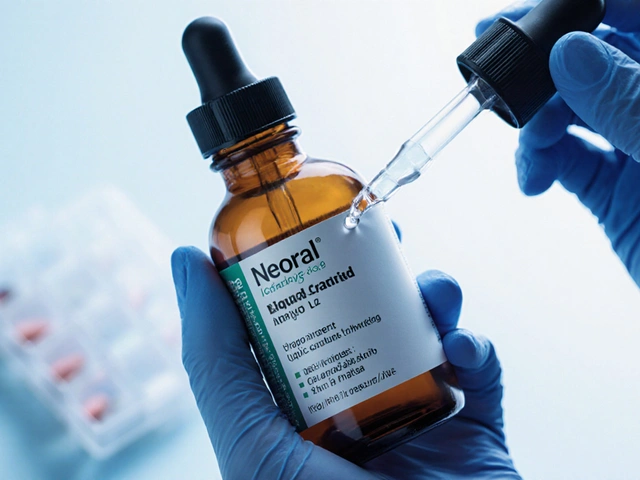Casein peptides is a short‑chain protein fragment derived from casein milk protein that is quickly absorbed, supports muscle protein synthesis, and enhances satiety.
If you’ve been chasing the perfect post‑workout shake or a night‑time recovery aid, casein peptides might just be the missing link. Unlike whole‑milk casein, which clots in the stomach, these hydrolyzed fragments bypass the slow gel and flood your bloodstream with amino acids within minutes. The result? Faster repair, less muscle breakdown, and a feeling of fullness that can curb late‑night snacking.
Why Casein Peptides Matter for Health & Fitness
- High leucine content triggers the mTOR pathway, the master switch for muscle growth.
- Slow‑digesting profile steadies blood‑amino acid levels for up to 7hours.
- Rich in bioactive peptides that may support immune function and bone health.
Research from the International Society of Sports Nutrition (2023) shows that athletes supplementing with casein peptides experienced a 12% greater increase in lean body mass over a 12‑week resistance program compared with whey alone.
Key Related Entities Explained
Whey protein is a fast‑digesting milk protein that spikes amino acids quickly but drops off within an hour.
BCAA (branched‑chain amino acids) are essential amino acids-leucine, isoleucine, and valine-critical for muscle repair.
Leucine is a key BCAA that directly stimulates muscle protein synthesis via the mTOR pathway.
Muscle protein synthesis is a cellular process where new muscle proteins are built, essential for growth and recovery.
Slow‑digesting protein refers to protein sources that release amino acids gradually, maintaining a positive nitrogen balance for longer periods.
Satiety is a physiological feeling of fullness that helps control calorie intake.
Collagen peptides are hydrolyzed connective‑tissue proteins mainly composed of glycine, proline, and hydroxyproline, supporting joint health.
Amino acid profile describes the relative amounts of each amino acid in a protein source, influencing its anabolic potential.
Insulin response is the rise in blood insulin after nutrient intake, which can help shuttle amino acids into muscle cells.
How Casein Peptides Work: The Science in Plain English
When you ingest casein peptides, they bypass the stomach’s coagulation step and enter the small intestine as pre‑broken chains of 2-20 amino acids. This rapid uptake leads to a steady rise in plasma leucine, which activates the mTOR complex 1 (mTORC1). Once mTORC1 is lit, the cell starts assembling new myofibrils-essentially rebuilding muscle fibers.
The slow‑release nature of casein peptides also sustains a modest insulin surge. Insulin isn’t just a sugar‑regulating hormone; it acts as a gatekeeper, opening muscle cell doors for amino acids. The combined leucine signal and insulin window create an optimal environment for net protein balance.
Practical Benefits for Different Goals
- Strength athletes: Faster recovery between heavy lifts, less overnight catabolism.
- Endurance runners: Reduced muscle soreness and better glycogen sparing thanks to delayed gastric emptying.
- Weight‑loss seekers: Enhanced satiety helps keep calorie intake in check, especially after evening meals.
- Older adults: The slow, continuous amino acid supply combats age‑related sarcopenia.
Dosage, Timing, and Stacking Tips
- Loading phase (optional): 20g of casein peptides split into two doses for the first 5days to saturate muscle stores.
- Maintenance: 10-15g 30minutes before bed or within 30minutes after a workout.
- Stack with whey: Pair 10g whey immediately post‑workout with 10g casein peptides before sleep for a “front‑to‑back” amino acid curve.
- Combine with BCAA: If you train fasted, a 5‑g BCAA shot can bridge the gap until your casein peptide shake arrives.
- Mix with healthy carbs: A small portion of oatmeal or a banana can boost the insulin response, enhancing amino‑acid uptake.
Comparison with Other Popular Protein Sources
| Attribute | Casein Peptides | Whey Protein | Soy Protein |
|---|---|---|---|
| Digestive Speed | Medium‑fast (hydrolyzed) | Very fast | Moderate |
| Leucine (g/100g) | 9.2 | 10.5 | 8.0 |
| Biological Value* | 85 | 104 | 74 |
| Satiety Index | High | Medium | Medium‑High |
| Allergenicity | Milk‑based (lactose‑reduced) | Milk‑based | Plant‑based |
*Biological Value measures how efficiently protein is utilized for tissue repair. Values sourced from the FAO protein quality report (2022).

Potential Side Effects and Who Should Avoid It
Casein peptides are generally well‑tolerated, but a few considerations are worth noting:
- Lactose intolerance: Although hydrolysis reduces lactose, highly sensitive individuals may still experience mild GI upset.
- Kidney concerns: People with pre‑existing renal disease should monitor total protein intake and consult a physician.
- Allergy risk: Those allergic to dairy should choose a plant‑based peptide alternative, such as pea‑derived hydrolysates.
Real‑World Success Stories
James, a 34‑year‑old CrossFit coach from Melbourne, switched his nightly protein shake from 30g whey to 15g casein peptides. After six weeks, his body‑fat percentage dropped from 14% to 11% while he maintained a 5‑kg increase in lean mass. He credits the improved satiety and reduced nighttime cravings for the body‑composition shift.
Maria, a 58‑year‑old yoga instructor, started taking 10g casein peptides before bed to combat age‑related muscle loss. Within three months, she reported a 10% increase in grip strength and felt more energetic during her morning sessions.
Where to Find Quality Casein Peptides
Look for products that disclose:
- Exact peptide length distribution (e.g., 2-10kDa)
- Source of milk (grass‑fed, hormone‑free)
- Third‑party testing for contaminants (heavy metals, microbial count)
Brands that meet these criteria often carry certifications from NSF International or Informed‑Sport. Paying a premium for transparency usually translates into better efficacy.
Putting It All Together: A Sample Daily Schedule
- 07:00am - Breakfast: Oats with 20g whey, berries, and a dash of cinnamon.
- 10:30am - Mid‑morning snack: 5g BCAA mixed with water.
- 13:00pm - Lunch: Grilled chicken, quinoa, mixed veg, and a small serving of casein peptides (10g) blended into a veggie smoothie.
- 16:00pm - Pre‑workout: 10g casein peptides with a banana.
- 18:30pm - Post‑workout: 20g whey + 5g creatine.
- 22:00pm - Bedtime: 15g casein peptides mixed with warm almond milk.
This pattern ensures a constant supply of leucine and other essential amino acids, maximizes recovery, and keeps hunger at bay.
Key Takeaways
- Casein peptides combine the fast absorption of hydrolyzed protein with the prolonged amino‑acid release of traditional casein.
- Their high leucine content directly triggers muscle protein synthesis, making them ideal for both strength and endurance athletes.
- When paired with whey or BCAA, they create a synergistic timeline that covers the pre‑, intra‑, and post‑exercise windows.
- Quality matters: choose products with transparent peptide profiling and third‑party testing.
- Beyond muscle, they boost satiety, support immune function, and may aid bone health.
Frequently Asked Questions
Can I take casein peptides if I’m lactose intolerant?
Most hydrolyzed casein peptides contain less than 0.1g of lactose per serving, which is tolerable for many lactose‑sensitive individuals. However, if you react to even trace amounts, opt for a dairy‑free peptide derived from peas or rice.
How does casein peptide timing differ from regular casein?
Regular casein forms a gel and releases amino acids over 6‑8hours, making it ideal for long‑duration fasting periods. Casein peptides break down faster, delivering a noticeable spike within 15‑30minutes while still providing a moderate release over 4‑5hours. This makes them more versatile for both pre‑ and post‑workout use.
Should I combine casein peptides with other supplements?
Yes. Pairing casein peptides with whey after training gives you the rapid amino‑acid surge you need, then a steady supply through the night. Adding creatine, BCAA, or a modest carb source can further improve uptake and performance.
What is the ideal daily amount for muscle growth?
Research suggests 0.4-0.5g of high‑leucine protein per kilogram of body weight per meal, spread across 3‑4 meals. For a 75‑kg athlete, that translates to roughly 30g of casein peptides split into two doses (pre‑workout and bedtime).
Are there any long‑term safety concerns?
Long‑term studies (up to two years) on hydrolyzed dairy proteins show no adverse effects on kidney function in healthy adults. The main caution remains for individuals with pre‑existing renal disease or dairy allergies, who should monitor overall protein load.







Kaylee Crosby
September 23, 2025 AT 23:10I've been using casein peptides for 4 months now and honestly it's been a game changer for my recovery
Used to wake up sore as hell after leg day but now I feel ready to go again by noon
Also noticed my late night snack cravings just vanished
No more pizza at 11pm and my body fat dropped without even trying
Biggest win? Still sleeping through the night instead of waking up hungry
Adesokan Ayodeji
September 24, 2025 AT 00:49Man this post hit different for me living in Lagos where protein options are either too expensive or too weird
Casein peptides are not easy to find here but I managed to get a bulk order from a supplier in Dubai
Been taking 15g before bed and honestly my grip strength improved so much I can now carry my whole grocery bag with one hand
My neighbors think I'm some kind of superhero now lol
Also my cousin who's 60 and has arthritis says his joints feel less stiff in the morning
Don't underestimate how much this stuff can help even outside the gym culture
It's not just for bodybuilders anymore
It's for anyone who wants to move better and feel stronger as they age
And yeah I know some people say it's just marketing but I've seen the results with my own eyes
My wife even started taking it and she's not even into fitness
She just said she feels more energized during her yoga sessions
So if you're on the fence just try it for 30 days and see what your body tells you
You might be surprised
Karen Ryan
September 25, 2025 AT 11:51Just tried this for the first time last night 😊
mixed it with warm almond milk and a sprinkle of cinnamon 🌿
felt so cozy and full without being bloated 🥹
woke up actually hungry for breakfast for the first time in months 🤯
also my hands didn't cramp during my morning stretch 👏
is this what science feels like?? 💫
Terry Bell
September 25, 2025 AT 16:26There's something deeply poetic about how a simple fragment of milk protein can hold the key to rebuilding muscle after a lifetime of wear and tear
It's not just chemistry it's like the body remembering how to heal itself
I used to think supplements were just hype until I saw my dad go from struggling to lift his grandkids to carrying them on his shoulders again
He's 68 and took casein peptides for six months
Now he hikes every weekend and says he feels like he's got his youth back
It's not magic it's biology meeting intention
And yeah I know some people will say 'just eat real food' but what if real food isn't enough anymore?
What if our soil is depleted our stress is high and our bodies are screaming for a little extra help?
This isn't about replacing food it's about supporting what food alone can't give us anymore
Casein peptides aren't a shortcut they're a bridge
And sometimes bridges are exactly what we need
Lawrence Zawahri
September 27, 2025 AT 00:55THIS IS A BIG PHARMA TRAP
They made casein peptides so you'd keep buying expensive powders instead of just drinking milk
They hid the fact that whole milk casein works just as well if you just wait 30 minutes
And why is there no long term study on this? Because they don't want you to know it's just a repackaged milk protein
They're selling you hope wrapped in lab jargon
And don't even get me started on the 'third party testing' BS
Those certifications are bought by big brands with marketing budgets
Meanwhile your money goes to shareholders not science
Stop falling for the hype
Drink milk. Eat eggs. Lift weights.
That's it.